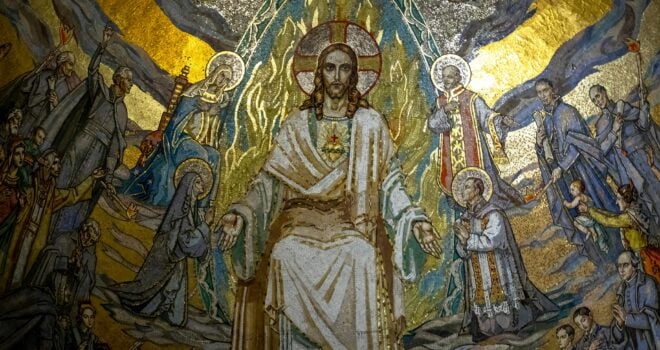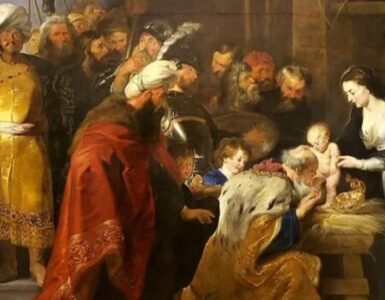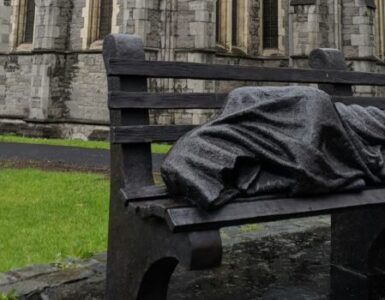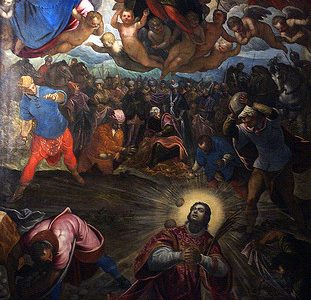As we begin a new Church year with the commencement of Advent, we recall a number of Old Testament prophecies that pertain to Christ’ birth and early life. They include:
- That He would be born of the tribe of Judah (Gn 49:10)
- That He would be born from the line of King David (2 Sm 7:16)
- That He would be born of a virgin (Is 7:14)
- That He would be born in Bethlehem (Mi 5:1)
- That He would be born during the fourth kingdom to rule over ancient Israel, which was the Roman Empire (Dn 2:44-45)
- Finally, that He would be called out of Egypt (Hos 11:1)
It’s fair to ask: why are Old Testament prophecies are so important in our Faith? In the simplest of terms, it is because they reveal the premeditative mind of God by making known His plan for our salvation. This revelation by God is divulged in the Old Testament with great specificity and in intricate detail.
I can well imagine that if there had only been one Old Testament prophecy, and Jesus fulfilled it, many might conclude that it was purely by happenstance. But what if there were two, or five, or eight? At what point would the probability of Jesus fulfilling them purely by happenstance exceed the improbable and enter the realm of the impossible? Afterall, Jesus didn’t just fulfill one or two or five or eight prophecies, he fulfilled all 353 prophecies contained in the Old Testament!
I’d like to share with you a true story of a mathematics professor who decided to conduct a class exercise with his students to determine the probability of a person randomly fulfilling eight of these 353 Old Testament prophecies. Twelve classes—and a total of over 600 students—participated in this exercise.
This professor’s name was Peter Stoner, and he taught mathematics at Pasadena City College in California until 1953. In 1957, Moody Press published a book written by Professor Stoner on this subject, called Science Speaks: An Evaluation of Certain Christian Evidences.
The eight prophecies Professor Stoner had chosen for this class exercise were:
- That the Messiah would be born in Bethlehem (Mi 5:1)
- That a messenger would prepare the way for the Messiah (Mal 3:1)
- That the Messiah would enter Jerusalem as a king riding on a donkey (Zec 9:9)
- That the Messiah would be betrayed by a friend and suffer wounds on His chest (Zec 13:6)
- That the Messiah will be betrayed for 30 pieces of silver (Zec 11:12)
- That the betrayal money would be used to purchase a potter’s field (Zec 11:13)
- That the Messiah will remain silent while He is afflicted (Is 53:7)
- And lastly, that the Messiah will die having His hands and feet pierced (Ps 22:17)
Notice that none of the eight chosen are by and of themselves extreme—such as foretelling the Messiah’s resurrection or ascension into heaven (which are also among the 353 prophecies). The students were asked to determine a reasonable probability for each of these eight seemingly “less significant” prophecies to be fulfilled by one person.
For instance, when considering the first prophecy of the Messiah being born in Bethlehem, the students had to determine the probability by calculating a reasonable estimate of the number of people born in Bethlehem from the time of the prophecy to the present and dividing that number by a reasonable estimate of the number of people born in the world during that same timeframe. The resulting percentage was then restated as a probability.
Considerable research was conducted and documented to substantiate their conclusions for each of the eight probabilities calculated. The eight probabilities then were multiplied together to calculate the overall probability that a person randomly fulfilled all eight of these prophesies.
Once the overall probability calculation was completed and reviewed by Professor Stoner, the work was submitted for review by the American Scientific Affiliation. Their findings are stated as follows:
The work has been reviewed by members of the American Scientific Affiliation and its Executive Council and has been found, in general, to be dependable and accurate in regard to the scientific material presented. The mathematical analysis included is based upon principles of probability which are thoroughly sound, and Professor Stoner has applied these principles in a proper and convincing way.
So, what was the overall probability that the students calculated in this exercise? Astonishingly, they found that the odds that a person would have fulfilled each of these eight Old Testament prophecies is 1 in a 100 quadrillion!
That’s 1 in a 100,000,000,000,000,000 chance. Scientists have estimated that there have been approximately 100 billion people that have lived on planet earth since its inception, which is a small fraction of the calculated probability.
Professor Stoner illustrated this probability in a more visual manner. He stated that if 100 quadrillion silver dollars were laid down within the geographic boundaries of the state of Texas, they would cover every square inch of the state and would amass a pile two feet high across the state.
One of these silver dollars is marked with an X on it. If a man were blindfolded, placed in the middle of the state, and told to walk in any direction for as far as he wishes and then stop, the probability of him stopping on the one X-marked silver dollar is about the same probability as one man “randomly” fulfilling these 8 prophesies.
Now as incredible as that sounds, we must realize that Jesus did not only fulfill these eight Old Testament prophecies but all 353 of them! Imagine what the odds of that would be! Bear in mind, the Dead Sea Scrolls attest to the existence of these Old Testament prophecies before the coming of Christ. They were not just “made up” after the fact.
The Gospel of Matthew, written primarily for the benefit of the Jewish people of the time, refers to 54 of the more significant of these Old Testament prophecies fulfilled by Jesus. And Matthew was an eyewitness to many of these fulfilled prophecies. Matthew died a martyr and never recanted a word of what he had written.
Throughout his gospel, Matthew uses phrases such as “this was to fulfill what the Lord had said through the prophet,” with the quotation from the prophet following.
God wants us to be saved so that we can spend eternity with Him. To that end, God does not require us to accept our redemption on faith alone but by faith and reason. And with all the scientific evidence that substantiates and supports the probabilities calculated by Professor Stoner’s students, along with overwhelming evidence in support of the authenticity of the Shroud of Turin, the burial cloth of Jesus, our reasoning abilities are given insurmountable proof of Jesus’ redemptive life, death, resurrection and ascension into heaven.
In this Advent season, we can be assured of that for which the Jewish people have longed for—the coming of the Messiah—who has indeed already come! We have but to accept the invitation to the wedding feast of the Lamb by living a life of true discipleship to enter into that which eye has not seen, nor ear has heard what God has in store for those who love Him.
Photo by Stephanie LeBlanc on Unsplash















